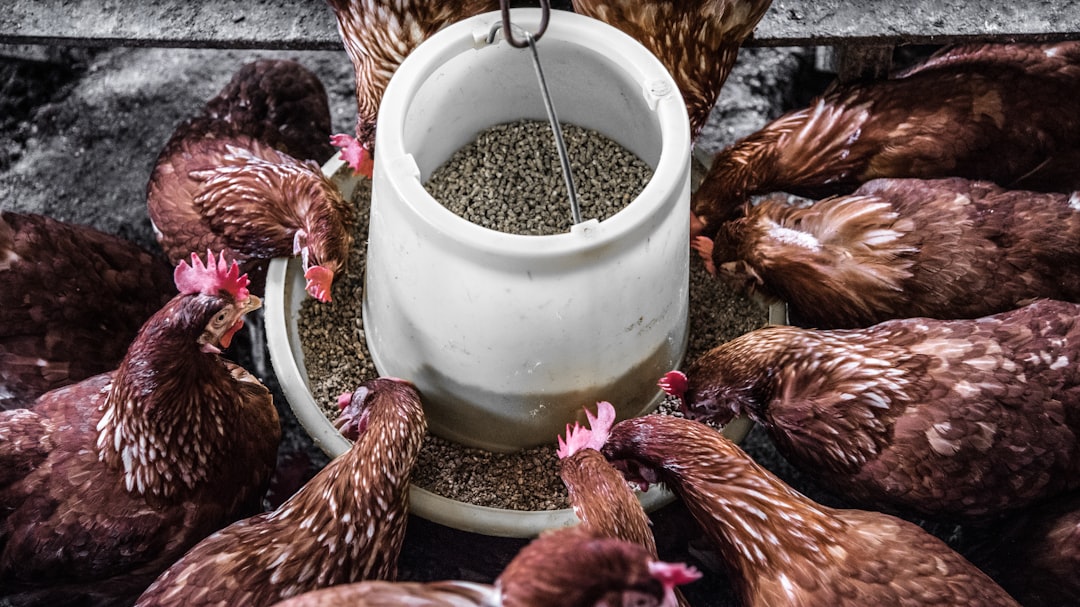Poultry farming, whether for meat or egg production, requires a deep understanding of the nutritional needs of birds at different life stages. Providing balanced diets is crucial for optimal growth, health, and productivity. Here’s a comprehensive guide to help you formulate the right diets for your poultry, covering various life stages and purposes.
1. Nutritional Needs at Different Life Stages
Chicks (0-4 Weeks)
-
High Protein Content: Starter feed should contain 20-22% protein to support rapid growth and immunity development.
-
Vitamins and Minerals: Include balanced vitamins and minerals for overall health.
Growers (4-8 Weeks)
-
Moderate Protein: Reduce protein to 18-20% to support muscle development while maintaining optimal feed conversion ratios.
-
Increased Energy: Focus on energy-dense formulations to support growth.
Finishers (8+ Weeks for Broilers)
-
Lower Protein: Typically 16-18% protein with an energy-dense formulation to prepare birds for market.
-
Optimized Energy Sources: Use grains like corn or sorghum for efficient energy supply.
Layers (> 20 Weeks)
-
Moderate Protein: Maintain 16-18% protein for maintenance and egg production.
-
Higher Calcium: Ensure 2.5-4% calcium for strong eggshell formation.
2. Nutritional Requirements for Different Purposes
Broilers (Meat Production)
-
High Protein: Initial diets contain 20-24% protein to promote rapid muscle growth.
-
Energy-Dense Diets: Use high-energy grains like corn to fuel growth.
-
Phased Feeding: Transition through starter, grower, and finisher phases to optimize growth.
Layers (Egg Production)
-
Balanced Energy: Ensure balanced energy sources to maintain healthy weight and egg production.
-
Calcium-Rich Diets: Higher calcium levels support eggshell quality.
-
Amino Acids: Include essential amino acids like lysine and methionine for egg size and production.
3. Key Nutrients for Poultry Diets
-
Protein and Amino Acids: Essential for growth and egg production. Lysine and methionine are particularly important.
-
Calcium and Phosphorus: Crucial for bone health and eggshell formation.
-
Vitamin D3: Supports calcium and phosphorus absorption, impacting egg production and hatchability.
-
Energy Sources: Cereal grains like corn, sorghum, and millet provide essential energy.
4. Formulating Balanced Diets
-
Raw Materials: Use cost-effective and locally available ingredients like whole grains, peas, and lentils.
-
Digestibility: Consider the digestibility of amino acids and use exogenous enzymes if necessary.
-
Customization: Tailor diets based on breed, age, and production goals.
5. Benefits of Balanced Diets
-
Improved Growth Rates: Optimized nutrition enhances weight gain and development.
-
Enhanced Egg Production: Proper calcium and amino acid levels improve egg quality and quantity.
-
Reduced Disease Risk: Balanced diets boost immunity and reduce disease susceptibility.
-
Cost Efficiency: Proper feed formulation minimizes waste and optimizes production costs.
Conclusion
Formulating balanced diets for poultry requires a deep understanding of nutritional needs at different life stages and for various purposes. By focusing on key nutrients like protein, calcium, and energy sources, you can optimize growth, health, and productivity in your flock. Whether you're raising broilers or layers, a well-planned diet is essential for achieving success in poultry farming.
Citations:
- https://vcahospitals.com/know-your-pet/chickens-diets-for-all-life-stages
- https://www.poultryhub.org/all-about-poultry/nutrition/nutrient-requirements-of-egg-laying-chickens
- https://www.poultry.care/blog/age-wise-feed-recommendations-to-maximize-poultry-growth-and-performance
- https://www.thepoultrysite.com/articles/nutrition-for-egg-production-and-eggshell-quality
- https://wiseias.com/nutrient-requirements-for-meat-and-egg-production/
- https://wiseias.com/broilers-layers-feeding-differences/
- https://nutrinews.com/en/feed-formulation-raw-materials-for-poultry-and-pig-diets/
- https://silverhomestead.com/homemade-chicken-feed-recipe-for-laying-hens/
- https://www.aces.edu/blog/topics/farming/nutrition-for-backyard-chicken-flocks/
- https://www.poultryhub.org/all-about-poultry/nutrition/feed-formulation
- http://www.vetcareafrica.com/2018/05/02/layer-chicken-growth-stages/
- https://www.poultry.care/blog/essential-guide-to-recommended-feed-loading-by-age-for-poultry-farmers
- https://www.msdvetmanual.com/poultry/nutrition-and-management-poultry/nutritional-requirements-of-poultry
- https://grow.ifa.coop/chickens/what-to-feed-your-chickens-from-chicks-to-hens
- https://feedtek.co.za/images/fokus/201609%20Basic%20concepts%20of%20broiler%20and%20layer%20nutrition.pdf
- https://www.stockfeed.co.nz/resources/poultry-feed/laying-hens-nutritional-requirements/
- https://poultry.extension.org/articles/feeds-and-feeding-of-poultry/feeding-chickens-for-egg-production/
- https://www.internationalscholarsjournals.com/articles/poultry-nutrition-for-eggs-and-meat-production-88528.html
- https://www.youtube.com/watch?v=ubL6OnATaGA
- https://grubblyfarms.com/blogs/the-flyer/how-to-feed-a-mixed-flock-of-poultry
- https://www.youtube.com/watch?v=8o_B0EwJ9Pg
- https://www.saskatchewan.ca/business/agriculture-natural-resources-and-industry/agribusiness-farmers-and-ranchers/livestock/cattle-poultry-and-other-livestock/poultry/general-nutrition-fact-sheet
- https://www.dineachook.com.au/blog/the-complete-guide-to-feeding-backyard-chickens/

Comments
No comments yet. Be the first to comment!
You must be logged in to comment. Login